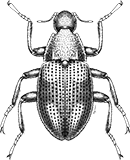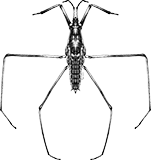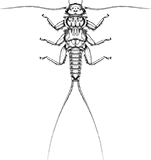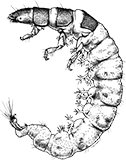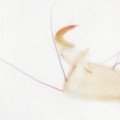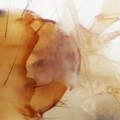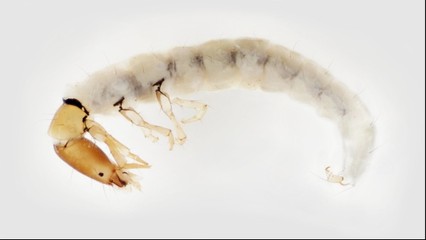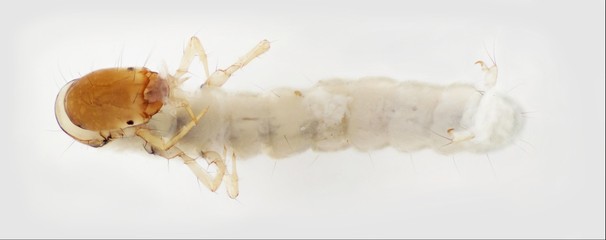Genus Overview
The larvae of this species are usually yellow or light orange in color, but turn white when preserved in ethanol. They live in warmer rivers where the larvae spin net-like retreats, used to filter detritus from the water for food. Sometimes the mesh is uniformly spaced, like other net spinners, but usually the mesh of these retreats is dense and irregular. The nets also tend to be clustered in groups of 5 or 6, and are found in crevices on the undersides of rocks, where the water can channel through. Fly-fishing enthusiasts sometimes tie their flies to mimic these larvae; they refer to them as yellow or orange caddisworms. The larvae can be distinguished from other genera in the family by the very asymmetrical, large notch at the anterior margin of the frontoclypeus.
Characteristics
POLLUTION TOLERANCE
Southeast: up to 2.8
Upper Midwest: up to 4
Midwest: up to 2.6
Mid-Atlantic: up to 4
0 = least tolerant, 10 = most tolerant
FEEDING HABITS
Collector / Filterer
MOVEMENT
Clinger
DISTRIBUTION
Widespread (east of the Rocky Mtns.)
HABITAT
Lotic-erosional
Diagnostic Characters



















